by The Crunchy Canine | Nov 17, 2024 | BLOG
Why Rabbit Feet Are a Healthy Treat for Dogs
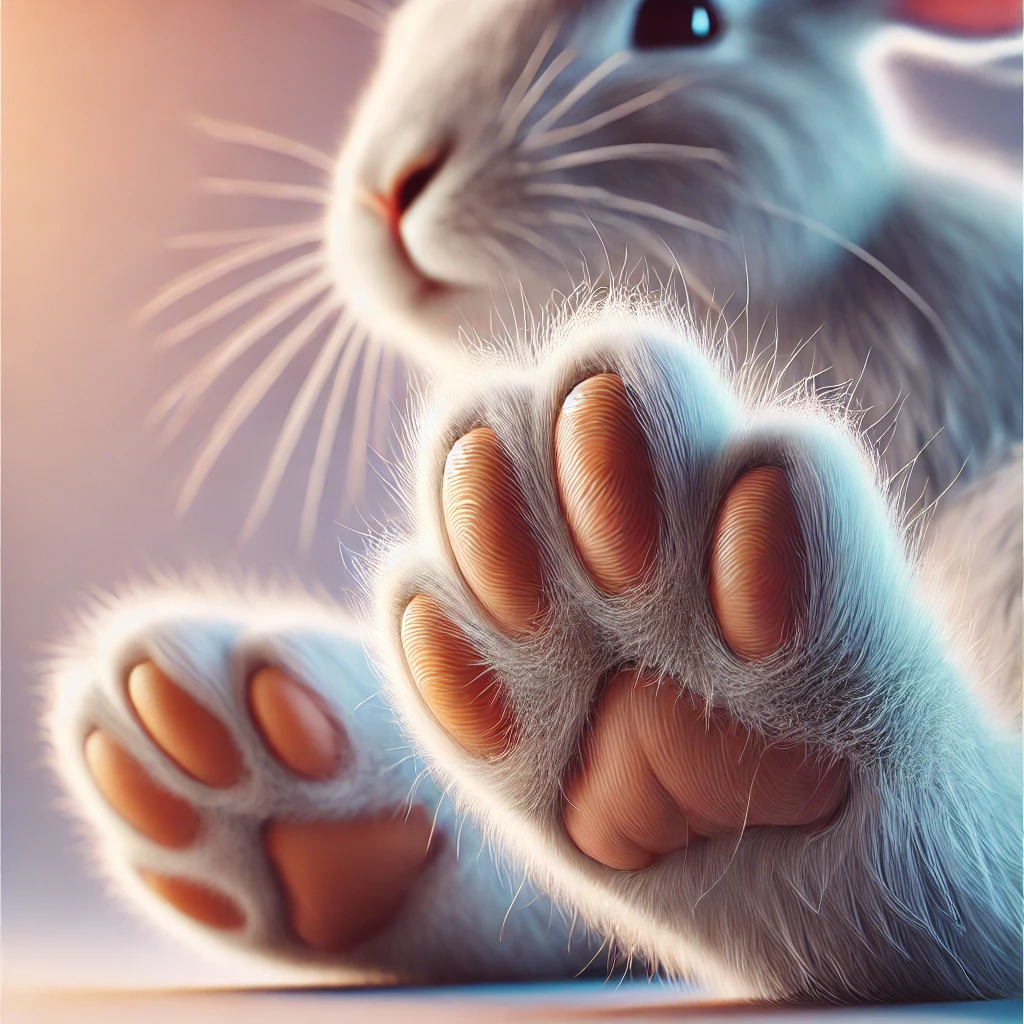 As dog owners, we’re always looking for nutritious and natural treats to keep our pets happy and healthy. Rabbit feet are a unique option that provides a range of benefits for your furry friend. Here’s why rabbit feet can be a great addition to your dog’s diet:
As dog owners, we’re always looking for nutritious and natural treats to keep our pets happy and healthy. Rabbit feet are a unique option that provides a range of benefits for your furry friend. Here’s why rabbit feet can be a great addition to your dog’s diet:
1. Packed with Nutrients
Rabbit feet are rich in protein and essential nutrients like calcium and phosphorus. These minerals are vital for strong bones, teeth, and overall skeletal health. The natural composition of rabbit feet ensures your dog gets these benefits without added fillers or synthetic additives.
2. Supports Dental Health
Chewing on rabbit feet acts as a natural toothbrush for dogs. The crunchiness helps scrape away plaque and tartar, promoting healthier gums and reducing bad breath. Regular chewing can help maintain oral hygiene naturally.
3. Great for Digestive Health
Rabbit feet are an excellent source of natural fiber due to their fur. The fur acts as a natural dewormer by sweeping through your dog’s digestive tract, which can help keep their gut clean and healthy.
4. Low in Fat and Hypoallergenic
Rabbit meat and byproducts, like feet, are lean and low in fat, making them a good treat for dogs prone to weight gain. Additionally, rabbit is considered a novel protein, so it’s an excellent option for dogs with food allergies or sensitivities to more common proteins like beef or chicken.
5. Encourages Natural Instincts
Gnawing on rabbit feet satisfies your dog’s natural chewing instincts and provides mental stimulation. This can reduce boredom and help prevent destructive chewing behaviors.
How to Serve Rabbit Feet
Rabbit feet can be fed raw, air-dried, or freeze-dried. Always ensure the product is sourced from a reputable supplier to guarantee it’s safe and free from harmful chemicals. Supervise your dog while they enjoy this treat, especially if they’re new to chewing.
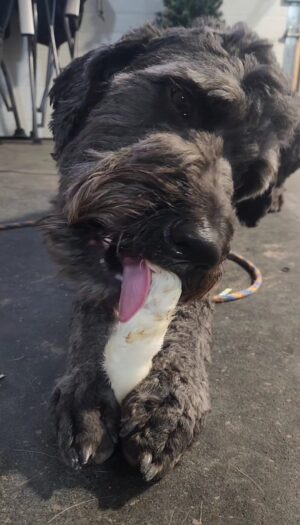
by The Crunchy Canine | Jun 18, 2024 | BLOG
As dog owners, we often spend a lot of time training obedience commands, taking our dogs for walks around the block, and complaining about all the things our dogs do that annoy us or the things we wish our dogs knew how to do….but do we spend much time thinking about how we can be a better dog owner? One easy and simple thing we can do to be better dog owners is to play with our dogs.
Here are 6 great reasons you should be adding play to your daily routine with your dog!
1. Physical Exercise: Play helps keep dogs physically fit, preventing obesity and related health issues.
2. Mental Stimulation: Engaging in play challenges a dog’s mind, preventing boredom and reducing the risk of destructive behaviour.
3. Socialization: Play with other dogs and humans helps dogs learn social cues, build social skills, and develop good manners.
4. Stress Relief: Play can reduce stress and anxiety, providing an outlet for pent-up energy and emotions.
5. Bonding: Play strengthens the bond between dogs and their owners, fostering trust and companionship.
6. Behavioural Benefits: Regular play can improve a dog’s overall behaviour, and promoting a well-balanced temperament.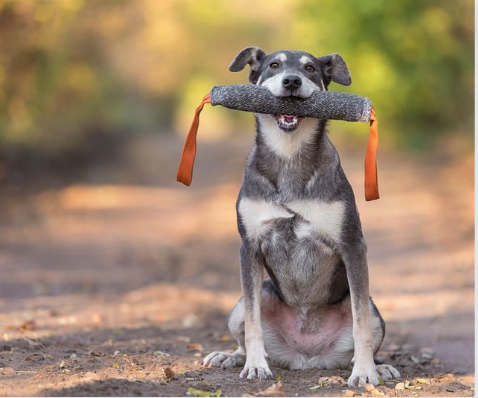
by The Crunchy Canine | Nov 30, 2023 | BLOG
Did you know that every breed has a purpose? Every bred was bred for a specific job. Many people buy a dog based on looks, or because they met one or two dogs of a certain breed, and thought “wow I really like this breed, I think I should get one”. The problem is that without doing any research on the breed, you might be in for a big surprise when the dog is displaying the exact behaviours they were bred to do (the behaviours you may not like). We get MANY inquiries for dog training where owners are complaining about their dogs behaviour and when we see what breed the dog is, we know that this owner did not do their research. It is the owners responsibility to learn about the breed, and find out how they can meet the dogs needs and keep them happy and fulfilled. It is not the dogs responsibility to go against their genetics and conform to meet the human’s wants simply because the human did not do their homework.
So what is it that your dog was bred to do? Even if you already have a dog, and you did not research the breed, it is not too late. We see people learn, evolve, grow, and adapt all the time to the dog that they have! It comes down to what are you willing to do to be a better more educated dog owner.
Here is a list of the top 15 most common breeds and/or breed categories that we see in pet dog homes that often display behaviours that the owner was not prepared for and what they were bred for:
- German Shepherds – Bred for herding and guarding sheep. They are extremely athletic, and while they should be friendly they are bred to be inherently leery of people outside of their inner circle (which is why they make great guard or protection dogs).
- Retrievers (Golden Retrievers, Labrador Retrievers and Poodles) – Bred to retrieve water fowl for hunters. Love water, will fetch/retrieve indefinitely. Strong drive to work and put objects in their mouth.
- Hounds (Dachshunds, Beagles, Coon Hounds etc) – Bred to follow their nose. Tracking is their main purpose in life. Their nose will override almost anything else. Incredibly independent, bred to work and cover plenty of ground.
- Mastiffs (English, Bull, Cane Corso, Dogo D’Argentina etc) – Bred to guard and protect homes and property. Instinct to protect from other animals including dogs and large animals like bulls, bears and even lions.
- Rottweilers – Bred to protect and guard livestock and property. Naturally leery of outsiders.
- Dobermans – Bred for protection. A guardian breed, naturally suspicious.
- Terriers (Jack Russel, Parsons, Yorkshire, Wheaten etc) – Bred to hunt and kill rodents and small animals. Strong prey drive and willingness to not back down. Will shake and kill small animals. One of the more intense working breed categories.
- Boxers – Originally bred for hunting and guarding. High energy, protective in nature.
- Pointers (Weimaraners, German Short Haired Pointer, Vizla etc) – Bred to hunt large game and adapted to smaller animals. They excel in hunting pointing, and retrieving.
- Border Collies & Australian Shepherds – Bred to herd livestock. Intense drive to control and move other animals and people. Bred to use their mouth to control livestock as well by nipping at heels/ankles.
- Bernese Mountain Dogs – Bred to pull carts and to drive cattle, as well as protect livestock from predators.
- Doodles (all of the varieties) – Half retriever, half whatever they are bred with. You can get the best of both worlds or the worst of both worlds.
- Spaniels (Cocker, Springer and Brittany) – Bred to flush out game for hunters. Natural swimmers and will retrieve water fowl.
- Schnauzers – Bred to hunt vermin and protect livestock.
- Huskies & Malamutes – Bred to pull heavy sleds and cover ground. Malamutes were also bred to protect their families.

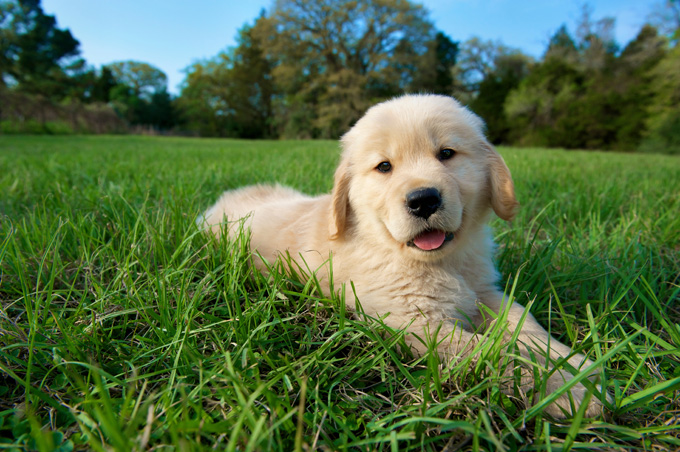
by The Crunchy Canine | Jan 17, 2022 | BLOG
If you are a family with kids and are considering getting a new dog, we hope this question has crossed your mind! We see so many people get dogs that are just not a good fit for families and all because they maybe met one dog of that breed that they really liked, or they just like the look of the dog! It is incredibly important to do your research and really get a feel for what you are signing up for! Just because you met a really nice, friendly, and calm German Shepherd does not mean that all German Shepherds will be the same.
So to save you some time, we have compiled our list of favourite breeds for families with children!
Active families with young children – For active families with young children we recommend Beagles or Labrador Retrievers. Both breeds are known to have easy going dispositions, friendly, should not have stranger danger, and love to get out and have some fun. Both have their own unique instincts based on what they were bred for but they should be adaptable to family life. We feel strongly that if you have a household with people coming and going, you should steer clear of breeds that genetically are predisposed to have stranger danger or be weary of people who are not in their inner circle. Labs and Beagles should welcome guests into your home with a wagging tail, enjoy being around kids, and always be up for adventure! Of course your Lab will want to retrieve things, and your Beagle will want to sniff, but neither of those traits should affect them being an amazing family pet! Plus both are super cute! Unfortunately, both do shed though. When choosing a Lab breeder, make sure you pick one that does not breed for colour (and certainly no dilute colours). We prefer Black labs and Yellow labs over Chocolate for personality and trainability. Golden Retrievers are another fan favourite and we do love them, but over the past few years we have seen breeding go down hill so if you can find a really good breeder then they are also a great choice!
Families with young children who are not overly active – If you have young kids but you’re family is not overly active you need to make sure you can provide your new dog with suitable exercise. However, there are two of our favourite breeds that will require less exercise than most. We absolutely adore the Havanese and King Charles Cavalier Spaniels. Both breeds are small, non-shedding, and low energy. In fact they were basically bred to be lap dogs. Unlike many other small breeds, they should be friendly, easy to train, and up for adventure but also happy to spend the day bingeing Netflix. If you are looking for a larger breed dog you can luck out with a lower energy lab if you go with an English or “show” lab, and if you are open to a giant breed the English Mastiff or the Leonberger are our favourites.
Families with young children who want a “doodle” type dog – Doodles are all the rage these, but there are so many bad “breeders” out there that we strongly recommend you consider other breeds instead. While the Doodle type dogs are cute, they are often very high energy, can be neurotic, prone to running away, and just overall challenging to train especially when you have young kids in the house. If you like the look we would recommend a Portuguese Water Dog, Barbet, or Standard Poodle. You might even consider a Wheaten Terrier if you are up for the challenge of a terrier breed! If you do go for a Doodle type dog, stick with the original Labradoodle or Goldendoodle. There are some nice dogs who are other Doodle type mixes but keep in mind you get both the best and the worst of the breeds so that in itself can be very challenging!
Families with young children who want a dog for protection – Unless you are buying a dog to train for protection then avoid this train of thought. We are not saying that a German Shepherd cannot be a good family dog. We are saying they were not bred for that and unless you understand the breed really well and are up for the challenge then you might be very disappointed. We see so many Shepherd type dogs available for rehoming around the 6 months mark and many from families with young kids. Another trend we are seeing is power breeds like Cane Corsos, Rottweilers, and Bully type breeds common among families with young kids. Again, we are not saying it wont go well, but we very often see it not go well. These dogs may be great with your family but are often prone to stranger danger, resource guarding and dominant behaviour around lower standing members of the family.
So to sum that up…for families with kids we love:
- Labs
- Beagles
- Golden Retrievers
- Havanese
- King Charles Cavalier Spaniels
- English Mastiffs
- Leonbergers
We hope this helps you on your journey of selecting the right dog for your family!
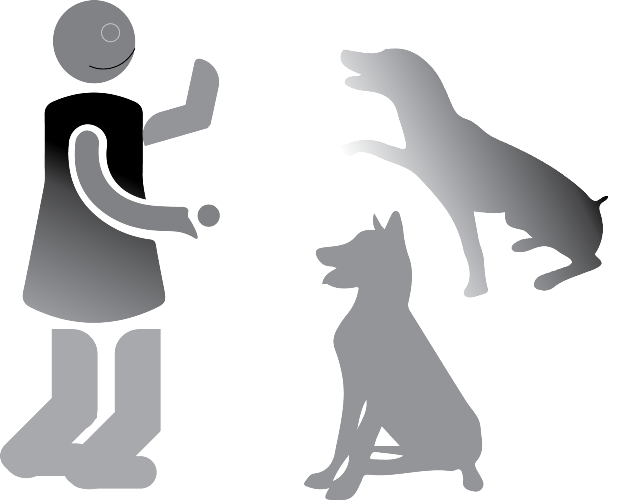
by The Crunchy Canine | Aug 9, 2021 | BLOG
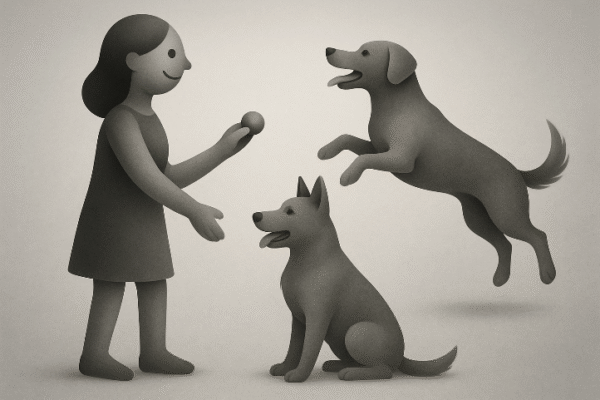 If you have a dog, or know someone with a dog you have probably heard about the importance of socialization! As new puppy owners, the term “socialization” gets drilled into your head. You MUST socialize this puppy otherwise it will be aggressive as an adult! Rescues often put in the description of their dogs who are either leery of humans or dogs (or aggressive towards them) that the dog was undersocialized as a puppy.
If you have a dog, or know someone with a dog you have probably heard about the importance of socialization! As new puppy owners, the term “socialization” gets drilled into your head. You MUST socialize this puppy otherwise it will be aggressive as an adult! Rescues often put in the description of their dogs who are either leery of humans or dogs (or aggressive towards them) that the dog was undersocialized as a puppy.
While we totally agree that proper socialization (key here is proper, and not just letting anyone and everyone tough and pick up your puppy, and definitely not taking them to the dog park) is super important, it may not be as crucial as you think. But how can that be? Socialization is the answer to all of your dog’s problems right? Nope! In fact over socialization is certainly a thing and cause it’s own set of issues. However, what we are talking about here is the fact that “training” and/or “socialization” cannot always and often does not override genetics.
Take for example children, sending them to school and doing all the extra curricular activities…while yes we should be getting our kids out and doing things with other people, these do not guarantee that your child will be an outgoing, super social butterfly who loves all the sports and activities. I myself attended public school, participated in countless activities (competitive dance, cheerleading, swimming, horseback riding, piano, skiing and more). I however, am extremely introverted, hate public speaking, have social anxiety and would take a small group of 2-4 people over a large party any day.
In fact, the thought of going to a large social gathering often makes me physically ill. My son who is now 6 attended daycare, preschool and Junior Kindegarten, played soccer, T-ball, took swimming lessons and gymnastics. He is also very shy, takes awhile to warm up to people and situations and would prefer 1-2 kids to play with than a big group. There are also plenty of people out there who did not participate in tons of activities, and many who were homeschooled and they are very outgoing, love big groups and gatherings.
Just like people, our dogs have their own distinct personalities. They are also specific breeds, and they are a product of their ancestors and genetics. On top of that, the real socialization window is actually from 3-14 weeks, so unless you are actively working on it then, you will just be training to undo whatever lack of socialization or bad experiences they had during that window. Due to this, finding a quality breeder who knows all about the critical window of opportunity is going to also play a huge role in who your dog becomes (but again not guaranteed because of course there are backyard breeders who have friendly dogs out there as well).
So while socialization is important, and proper socialization gives your puppy the best chance at being a well rounded adult dog, it does not guarantee they will love everyone and everything! We strongly suggest that you do focus on proper socialization to give your puppy the best chance at being a well rounded, friendly adult dog, remember that it does not guarantee anything!
by The Crunchy Canine | Jul 8, 2021 | BLOG
We often find our clients not understanding why their dog struggles with certain behaviours. Most of the time the human has set a certain expectation and the dog fails miserably. Leading up to this failure no criteria was set, not enough training time was put in, and expectations were not met. So how do we dissect this and get passed it?
Take for example a dog who is reactive to other dogs while on leash. Most dog owners have no idea what the criteria should be and have high expectations of their dog. What does that mean? All they know is that they want their dog to walk politely past other dogs right? However, if we raise our criteria and lower the expectations we can make major headway in our training. So when we are working with reactive dogs we raise our criteria; you must be able to stay calm, listen to my commands, accept food, and keep moving while we train. That will most likely mean you need to move further away from the trigger.
We are in turn lowering our expectations in that I do not expect my dog to be able to do any of those things at a certain distance from the trigger, rather I figure out where I can be successful at raising my criteria. So if at 20ft your dog loses his mind when he sees another dog, cannot accept food, and does not respond to any commands then you need to lower your expectations. It is unreasonable at this time to expect him to be successful at 20ft. If at 40ft he can stay mostly calm, accept food, listen to commands and keep moving then you have raised the criteria but lowered your expectations.
As you progress in your training you will be able to continue to raise the criteria. For example the criteria is to be able to do the above listed things at a closer distance, but keeping your expectations reasonable based on the amount of training you have been doing.
Another very basic example for this would be lets say you are working on your dogs sit command. You want your dog to be able to listen to your command the first time and hold a sit in any environment. However, when out in public around people he cannot do it just yet. So, how do we raise the criteria but lower our expectations? Raise the criteria; you must sit the first time when I ask, you must hold the command until I release you, and I will enforce this no matter what.
My expectation that my dog can do this needs to be lowered as I know he struggles. So I have to think how can I set this up so my dog is successful? Train at a further distance, make sure my leash is on so I can enforce the commands, and then make it happen (no matter what). I am not expecting my dog to be perfect, but I am raising the criteria and helping him be successful. As he gets good at this we move closer while still maintaining our criteria.
So if you are struggling with your dog’s behaviour, the best thing to do is to take a step back, think about what it is you need your dog to be able to do (or not do), lower your expectations, and raise the criteria for training.
 As dog owners, we’re always looking for nutritious and natural treats to keep our pets happy and healthy. Rabbit feet are a unique option that provides a range of benefits for your furry friend. Here’s why rabbit feet can be a great addition to your dog’s diet:
As dog owners, we’re always looking for nutritious and natural treats to keep our pets happy and healthy. Rabbit feet are a unique option that provides a range of benefits for your furry friend. Here’s why rabbit feet can be a great addition to your dog’s diet:





